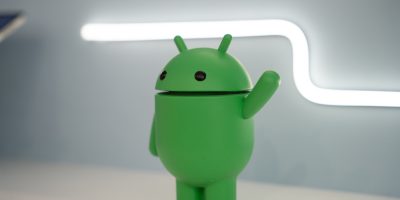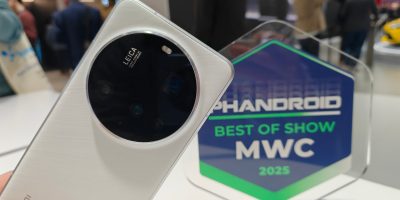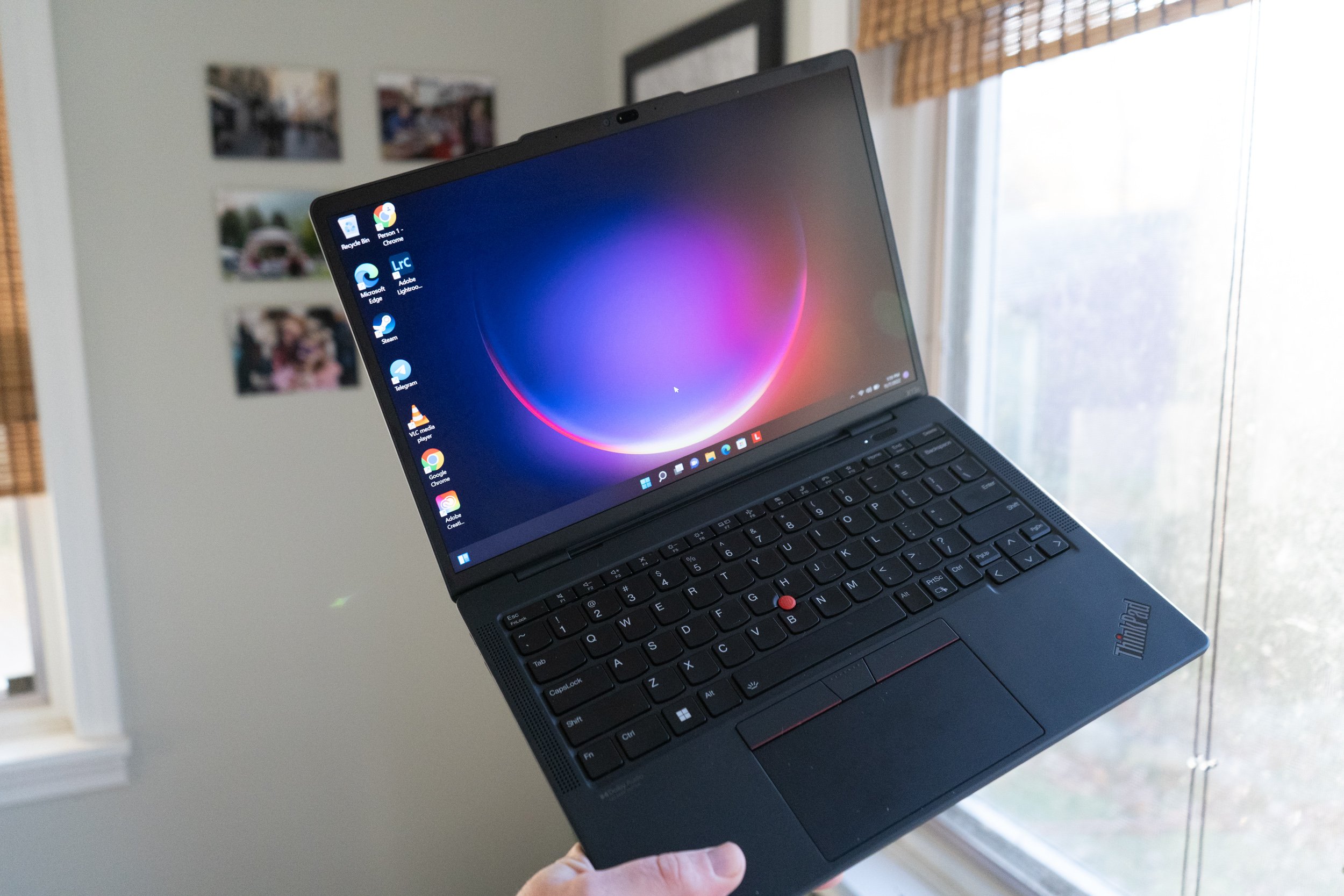This piece was written by Byron G, a member of XDA-Developers since June 2010, and re-posted per his approval. This information was originally posted in the DROID Incredible General section at XDA. If you would like to submit written content to be featured on the front page of Phandroid or if you have existing content that you’d like to get considered for republishing, feel free to drop us a line using our contact form.
Climbing out of bed, about to start your day, you unplug your new smartphone from its wall charger and quickly check your email. You’ve left it plugged in overnight, and the battery gauge shows 100%. After a quick shower, you remember that you forgot to send your client a file last night. You pick up your phone again, but the battery gauge now reads 90%. A 10% drop in 10 minutes? The phone must be defective, right?
A common complaint about today’s smartphones is their short battery life compared to older cell phones. Years ago, if you accidentally left your charger at home, your phone could still make it through a weeklong vacation with life to spare (I did it more than once). With the newest phones on the market, you might be lucky enough to make it through a weekend.
And why should we expect anything else? Phones used to have a very short list of features: make and receive phone calls. Today we use them for email, web surfing, GPS navigation, photos, video, games, and a host of other tasks. They used to sport tiny displays, while we now have giant touch screens with bright and vibrant colors. All of these features come at a cost: large energy requirements.
Interestingly enough, improvements in battery management technology have compounded the average user’s perception of this problem. Older phones were rather inelegant in their charging behavior; usually filling the battery to capacity and then switching to a trickle current to maintain the highest charge possible. This offered the highest usage time in the short-term, but was damaging the battery over the course of ownership. As explained at Battery University, “The time at which the battery stays at [maximum charge] should be as short as possible. Prolonged high voltage promotes corrosion, especially at elevated temperatures.”[1]
This is why many new phones will “lose” up to 10% within a few minutes of coming off the charger. The reality is that the battery was only at 100% capacity for a brief moment, after which the battery management system allowed it to slowly dip down to around 90%. Leaving the phone plugged in overnight does not make a difference: the phone only uses the wall current to maintain a partial charge state.
To monitor this, I installed CurrentWidget on my HTC ADR6300 (Droid Incredible), an app that can log how much electric current is being drawn from the battery or received from the charger. Setting it to record log entries every 10 seconds, I have collected a few days worth of data. While many variables are involved (phone hardware, ROM, kernel, etc) and no two devices will perform exactly the same, the trends that I will describe are becoming more common in new phones. This is not just isolated to a single platform or a single manufacturer.
Chart 1 shows system reported battery levels over the course of one night, with the phone plugged in to a charger. Notice that as the battery level approaches 100%, the charging current gradually decreases. After a full charge is reached, wall current is cut completely, with the phone switching back to the battery for all of its power. It isn’t until about two hours later that you can see the phone starts receiving wall current again, and even then it is only in brief bursts.
The steep drop in reported battery seen past the 6.5 hour mark shows the phone being unplugged. While the current draw does increase at this point (since the phone is being used), it still cannot account for the reported 6% depletion in 3 minutes. It should also be obvious that maintaining a 100% charge state is impossible given the long spans in which the phone is only operating on battery power.
Using the data from CurrentWidget, however, it is quite easy to project the actual battery state. Starting with the assumption that the first battery percentage reading is accurate, each subsequent point is calculated based on mA draw and time. Chart 2 includes this projection.

Now we can see that the 6% drop after unplugging is simply the battery gauge catching up with reality.
The phone manufacturers essentially have three choices:
1. Use older charging styles which actually maintain a full battery, thereby decreasing its eventual life
2. Use new charging methods and have an accurate battery gauge
3. Use new charging methods and have the inaccurate battery gauge
Option one has clearly fallen out of favor as it prematurely wears devices. Option two, while being honest, would most likely be met with many complaints. After all, how many people want to see their phone draining down to 90% while it is still plugged in? Option three therefore offers an odd compromise. Maybe phone companies think that users will be less likely to worry about a quick drop off the charger than they will worry about a “defective” charger that doesn’t keep their phone at 100% while plugged in.
Bump It. Or Should You?
One technique that has gained popularity in the user community is “bump charging.” To bump charge a device, turn it off completely, and plug it into a charger. Wait until the indicator light shows a full charge (on the ADR6300, for example, the charging LED changes from amber to green) but do not yet turn the device back on. Instead, disconnect and immediately reconnect the power cord. The device will now accept more charge before saying it is full. This disconnect/reconnect process can be repeated multiple times, each time squeezing just a little bit more into the battery. Does it work?
The following chart plots battery depletion after the device has received a hefty bump charge (6 cycles) and then turned on to use battery power. Note that the system does not show the battery dropping from 100% until well over an hour of unplugged use, at which point it starts to steadily decline. Again, however, it should be obvious that the battery gauge is not syncing up with reality. How could the rate of depletion be increasing over the first 5 hours while the rate of current draw is relatively steady? And why does the projected battery line separate from the reported levels, but then exactly mirror the later rises and falls?
The answer, of course, is that bump charging definitely works. Rather than anchoring our projected values to the first data point of 100%, what happens if we anchor against a later point in the plot?

Aligning the data suggests that a heavy bump charge increases initial capacity by approximately 15%. Note that the only other time that the lines separate in this graph was once again when the phone was put on the charger and topped up to 100%. Just as with the first set of graphs, the phone kept reporting 100% until it was unplugged, dropped rapidly, and again caught up with our projections.
So what does it all mean?
If you absolutely need the highest capacity on a device like this, you will need to bump charge. There are currently people experimenting with “fixes” for this, but I have yet to see one that works. Be warned, however, that repeated bump charging will wear your battery faster and begin to reduce its capacity. If you are a “power user” who will buy a new battery a few months from now anyway, this presumably isn’t a concern. If you are an average consumer who uses a device for a few years, I would recommend that you stay away from bump charging. The bottom line is that you don’t really “need” to do it unless you are actually depleting your battery to 0% on a regular basis.
If you are someone who can top off your phone on a regular basis, do it. Plug it in when you’re at home. Plug it in when you’re at your desk. As explained by Battery University, “Several partial discharges with frequent recharges are better for lithium-ion than one deep one. Recharging a partially charged lithium-ion does not cause harm because there is no memory.”[2]
Beyond that, the best advice I can offer is to stop paying such close attention to your battery gauge and to just use your phone. Charge it whenever you can, and then stop obsessing over the exact numbers. If you really need more usage time, buy an extended-capacity battery and use it normally.
This piece was written by Byron G, a member of XDA-Developers since June 2010, and re-posted per his approval. This information was originally posted in the DROID Incredible General section at XDA. If you would like to submit written content to be featured on the front page of Phandroid or if you have existing content that you’d like to get considered for republishing, feel free to drop us a line using our contact form.













In the case of the DInc there’s obviously a flaw in the system. I got mine in June and subsequently went through 3 of them and none of them would even take a “true” full charge unless you charged it with the phone off. And even then I could barely manage 5-6 hours with very light usage. My Motorola Droid easily got 7-9 hours with moderate to heavy usage. I finally said goodbye to the DInc a few weeks ago and got the Droid X which is consistently lasting 8-12 hours with moderate usage and the battery profile set to performance.
@CJ: The incredible and moto droids have different size batteries, and different hardware, comparing apples to oranges.
Why in the world are you using the model number instead of just saying droid incredible
Here’s a link to another member’s opinions. http://forum.xda-developers.com/showthread.php?t=876590
Although it’s for the EVO, I’ve been using this kernel. I’m simply pointing this out to others who read this.
Cool, thanks for the info! Does anyone know if this charging system applies for newer laptops too?
It’s so hard not to obsess over my battery life sometimes. But I’ll try not to.
very nice article
@Jrdroid
He copied it from XDA, so actually he didn’t O.o
I am a power user and own a dinc…i bought the extended battery and get 8-12 hours usually. I am always on my phone so the extended was a worth while purchase. The stock battery is a bit weak. Whom ever wins the battery tech race will certainly improve sales. Hopefully oems are working on this and best apple!
where have i seen this exact text before?
I have found out that if you buy a separate battery wall charger and get a spare battery (I have an EVO so you can get a htc hero battery for cheap)it gives me much longer battery life than charging the phone itself. So in the morning before I leave I just replace the battery that charged in the in the phone all night with the one in the charger and I’m good to go.
@Lieutenant did you read the whole article?
@Dario I think he was directing the question to the original author.
How about instead of lying about being full and being honest once it discharges a few percent causing the massive drop, why don’t they claim full is being 95% of capacity and scale the meter based on that? Then we wouldn’t get rapid jumps at the beginning and everything would seem very soon.
Maybe add a header at the very beginning of the article. Otherwise the reader will think “plagarism” unless they finish the entire thing…
Clearly of you read the last paragraph there is a reference to the article in which it was taken….get over it! geeez!
Got to love errr hate these commenters that try to tell the writers how to write/post.
Damn. I thought they finally fired Quentyn.
Great article!
That article gives some dangerous advices. Is it sponsored by the battery industry?
Sure li-ion batteries don’t suffer from a memory effect. But there is a limited number of charge cycles. Manufactures often state one thousand thycles but often it’s about half that before the battery life drops significantly.
Any charge, no matter how small, takes one charge away. So if you’re constantly bumb charging you’re using up those cycles quickly.
Li-ion battery are best charged from 20% to 80%. Lower charges (deep discharge) hurt the battery as much as beeing charged to the max. So constantly keeping them near 100% using bump charging is hurtful on many levels.
Great read, thanks.
Awesome, thanks for the great article. Now it all makes sense.
Great article, great read, lots of useful information. Thanks, OP.
Excellent article. This also gives me some understanding as to why the battery gauge on my Droid appears “full” until it hits 80% – it gives the non-nosy users less reason to question things.
It still doesn’t explain why the graphical representation of battery level is so misleading for the rest of the way to zero though.
Oddly, I sometimes find (counter to conventional wisdom) that leaving my 4g and wifi antennae ON actually INCREASES my battery life. Weird, huh?
easier said than done. when you have a 12 hr shift and 3 hours in you’re sitting at 70%, you start to get a little worried about making it through the rest of the day and have to cut back on phone usage once you hit 30% for just needed activities. wish a higher capacitive battery would hit the market for the mytouch slide without making it insanely thick.
i have the droid 2. with extended battery. just breaking in my 2nd extended battery right now actually thanks to moto delaying my order and sending me a 2nd one to make up for it. but yea. great article. batt life is something that is huge in the android/smartphone world.
Why couldn’t the phone hit 100% and then bypass the battery altogether and use only wall power? To my knowledge, that’s what laptops do.
I have a hard time believing the 10% drain from 100% – 90% is purposely designed to do so. I love my Evo (& not giving it up) but this is a flaw I have only seen on Android devices. My Blackberry doesn’t have this charging issue and their battery’s don’t suffer from any form of “corrosion” over time as this article indicates. Neither do iPhones. I really think the manufacturers need to step their game up and instead of investing all their resources into faster processors, give us some longer battery life technology in our Android devices.
It should also be noted that 100% when you first bought the phone, and 100% two years from then is not the same. The “life” of a battery is when “100% charge” is 50% of the rated capacity. Every time you charge/discharge the battery you lose a little bit of capacity. Over time, you will get less battery life then you used to.
@ohboy: wifi seems to eat less battery than a 3G connection, that’s why I never even bother to turn off wifi on my Desire.
My main concern is actually the different capacity concerning the same usage.
If a user uses a smartphone for a few calls only, no gps, no internet, the capacity is still less due to the way the OS work.
The new systems, mostly because of the screen, even in idle still drain more power that one should wish for…
I’ve quit obsessing over the battery life. Sure I’d like to get at least 2 days worth of moderate use without a recharge but I can live with one recharge per day. Even with the 1750 extended battery in my Incredible, I only get about 5 hours of moderate to hardcore use. I’m hoping by the next time I get a new smartphone, in about a year, battery issues will be a thing of the past.
@sasopu I leave my wifi on too. But it drops/disconnects from my access point all the time. I’ve found the quickest way to reconnect is to cycle wifi power with a widget…but I don’t understand why my Droid X is dropping the connection all the time.
I’m not having any luck finding a solution online either.
What we really need is a charging circuit that can be controlled by software . . . I can envision a charging app that can be set to reach 100% charge shortly before your normal wake time . . . If you plan to rise at 7 a.m., then the phone could hit 100% at 6:30 or 6:45 a.m., and you would have the benefit of a full battery without the damage that “bumping” will cause. A REALLY smart app could even make it automatic by looking at the time for your next morning alarm. Why haven’t the manufacturers taken this route, instead of fudging the charge numbers?
The Droid Incredible has always been known to have poor battery life and one of the reasons I chose my Galaxy S over the Incredible or DX. Other than that, its a decent phone.
My vibrant I use to have wouldn’t even make it through the day
Thank you for the advise it really works on my Droid incredible.
I own a Droid Incredible and have my 8 month old original battery, I get 14 hours a day on average using it moderately. Look for power management applications like Juice defender, when properly configured it can multiply your battery life by 1.75 and not hamper data flow that much. ie, turns on every 15 min for 1 min, allowing emails and other stuff (with screen off).
I rather have a 5000 mAH battery even if it makes my phone twice as heavy and a 1/4 thick.
Smart phones have the features is it too much to ask for to be able to wake up 5am browse the internet check the mail for a hour, stream music for a few hour, maybe 2 hours of calls, play games for an hour, watch a 2 hour movie, and at the end of the day browse a bit more check mail all this and have battery life left when I pull it in at 11pm?
This is not unreasonable usage for one day and I know no phone with a 1400mAH battery that would give you this freedom. The recommendation plug in car, at work does not always cut it. I just cam back from a trip and from 5am to 11pm I had no way to charge my device.
As far as the article saying for technical reasons full capacity is 95% ….. fine but why lie to us? Tell us a 1000 mAH battery is really a 950 mAH battery show us on the screen full battery at 950 mAH
First off I didn’t read most of the article, but this seems like an excuse for the poor battery life that android phones seem to get. When I had my iphone 4 the battery life was amazing.
@Gary
Then you should read the whole article. The iPhone 4 gets amazing battery life because Apple put so much effort into the battery, not just the performance of the device like many android manufacturers seem to do. Look at a picture of the inside of an iPhone 4 sometime and look at how much of it is the battery. This article is not an excuse for the poor battery life of android devices.
Had this Mytouch slide for half a year now and am careful to never leave chatging overnight. Now all sudden it will charge only half battery capacity(40-50%) then stop charging. Why does it behave like this?? The battery is labeled “good” by the phones info screen. Anyone can help me in this would be greatly appreciated.
Nice article, thanks for the info
the VAST
majority of “my battery lasts XX” is
USELESS
without a list of the modifications — not shockingly this includes ALL applications installed AND running
much like firefox support threads that cannot be botered to list extensions or non-defaults
so thanks for sharing what works for you
NEXT time I AM YOU that’ll be a real big help
L:P
botered == botHered
@OP
..
how much battery is consumed by
ADWARE
in “free” software
?
oh, yeah, that…. hmmmmm
adblock plus has been forked for chromium (yes, feckless, that means trickle down chrome support)